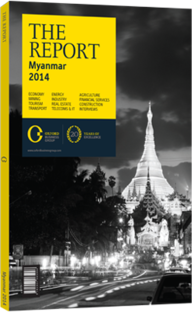In the zone: Mapping the opportunities and challenges of industrial zones
Myanmar may find that the first steps toward general nationwide economic reform will begin within industrial estates. These zones can create forms of ownership not possible under the law of the land, and can be paired with special incentives and offer better infrastructure than is available elsewhere. The strategy has worked well in Thailand, where industrial estates have been especially popular with Japanese manufacturers.
Background
Myanmar has had industrial zones for more than two decades, and which were originally established in the 1990s to allow for the development of market-oriented economics within specific areas. In total, 18 of these zones have been set up, from Kalaymyo north of Mandalay to Myeik in the south. Most of these, 14 in total, are located in the Yangon area. The industrial zones vary in terms of what they offer, some are little more than property developments and others more full-service in nature. Costs for land and land-use terms can also be different from one zone to another.
From Zones To SEZs
The zones have not always been successful. Hlaing Thar Yar Industrial Zone 5, for instance, was almost empty in 2012, while East Dagon and Kyan Sitha were half full as of 2013. Other zones remain undeveloped altogether. Notwithstanding, the situation is fast changing. Owing to interest from international investors, land in industrial estates is receiving bids and new infrastructure is being put into place. Japanese and South Korean investors, in particular, are showing significant interest, where previously it was mainly investors from China and Vietnam acquiring land in industrial estates. The government plans to add seven additional zones given the increased demand.
More important perhaps than the industrial zones are the special economic zones (SEZs). A total of six SEZs have been mentioned in the press, though only four are reported to be moving forward, namely Muse, Thilawa, Kyaukphyu and Dawei. The 117-ha SEZ in Muse, Shan State, announced in mid-2013, will sit on the border with China. Kyaukphyu in Rakhine State is an $8bn, 405-ha site with a deep-water port that lies at the terminus of a Chinese rail and pipeline project running from Yunnan. Bids were taken in late 2013 from the private sector to develop the SEZ, while the Chinese government has officially requested that Myanmar speed up development of the zone. Thilawa SEZ is a 2388-ha site located on the Yangon River 25 km from Yangon, which has received considerable support from Japan: Mitsubishi, Marubeni and Sumitomo will own 49% of the zone, with the remaining 51% owned locally. Itochu, meanwhile, has agreed to build a bridge from Thilawa to Yangon. The Japanese government has committed $12.6bn of building infrastructure for the project, according to Reuters, and an initial public offering of Thilawa has been planned for early 2014. A 449-ha industrial park will be finished at the site by 2015.
A Key Project
Dawei, meanwhile, a $50bn, 205-sq-km SEZ that was planned in 2006 and initiated in 2008, is located 623 km south of Yangon and 350 km west of Bangkok. The project was originally designed to include a deep-water port, an industrial estate, utilities and a comprehensive transportation network, and is part of a 75-year land lease under a 60-year concession. However, delays as a result of financial problems, in addition to issues of control and local resistance, continue to affect the project’s progress.
Thailand’s Italthai Group, the original concessionaire, has faced challenges raising funds, and while the Myanma and Thai governments have agreed to back Dawei, using Italthai as a contractor, they do not have the finances to complete the plan. As such, Dawei is moving along with loans mostly from state-owned Thai banks, though what it needs is Japanese support. Whereas the private sector has been more forthright, the Japanese government has so far been cool on the idea, stating that the port is impractical; the area lacks sufficient population and housing for workers; and the land links to the outside world will be difficult to construct.
In fact, the Japanese government is more attracted to Thilawa, which is of a more manageable size. While it has fewer road connections, sea routes are adequate.
You have reached the limit of premium articles you can view for free.
Choose from the options below to purchase print or digital editions of our Reports. You can also purchase a website subscription giving you unlimited access to all of our Reports online for 12 months.
If you have already purchased this Report or have a website subscription, please login to continue.

